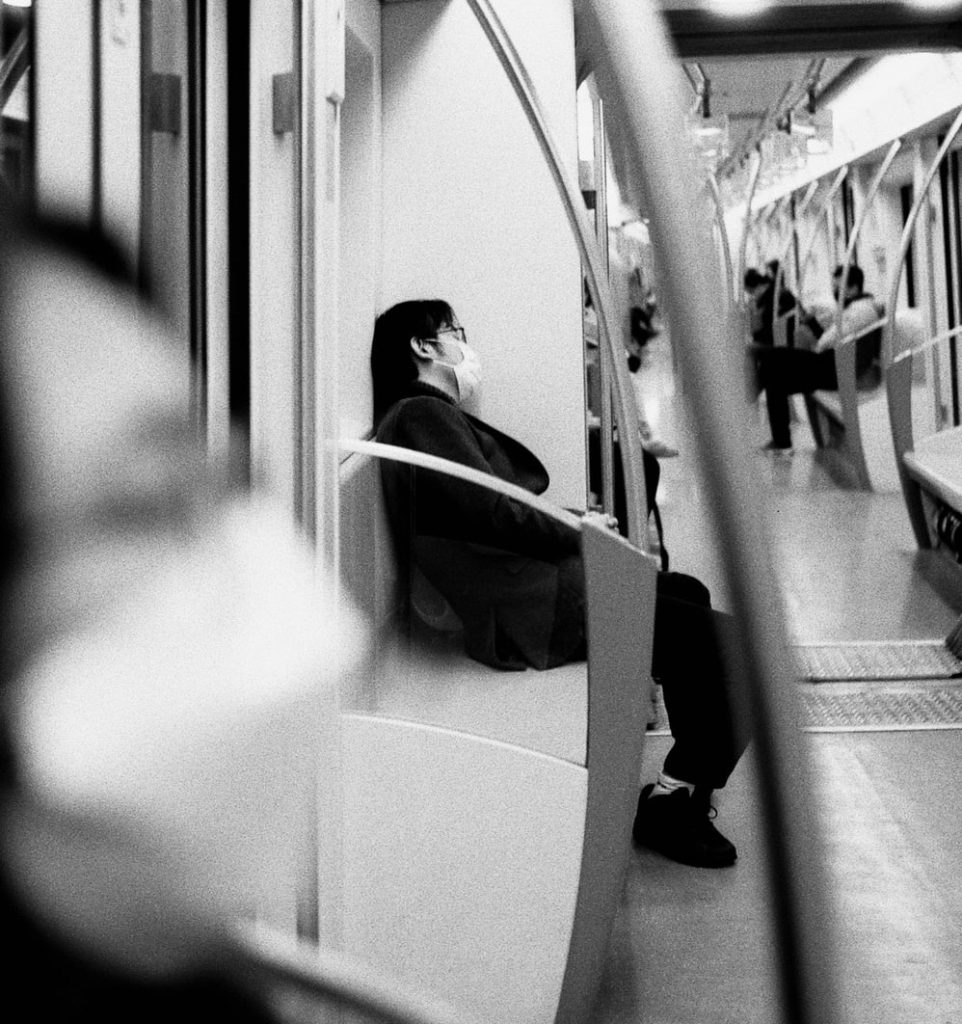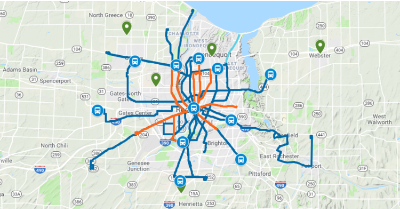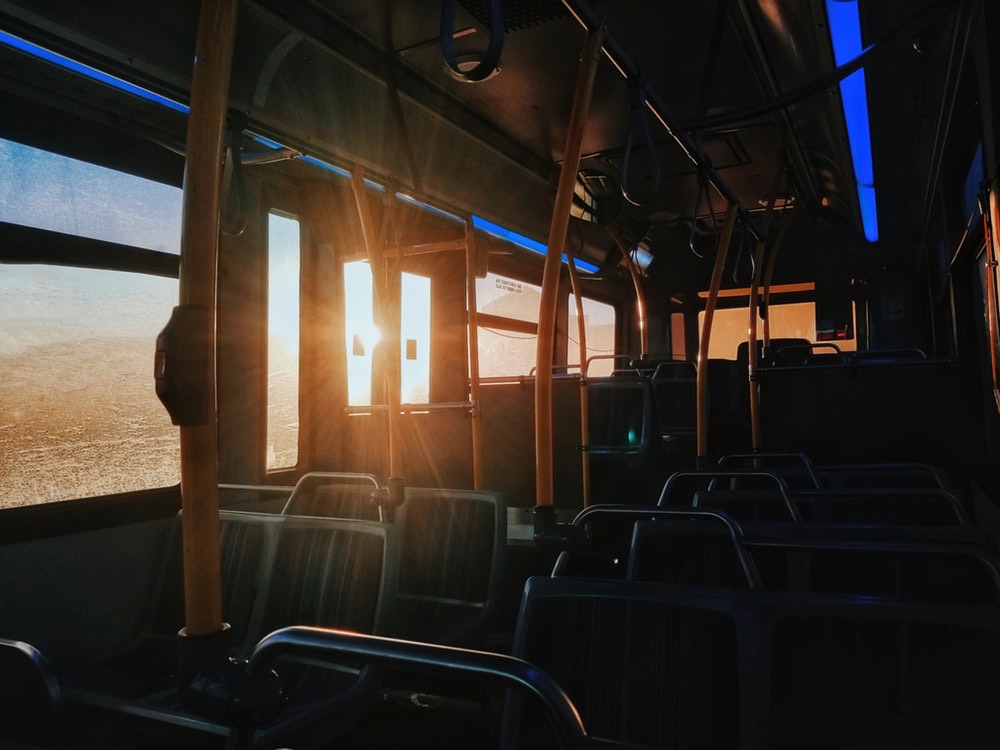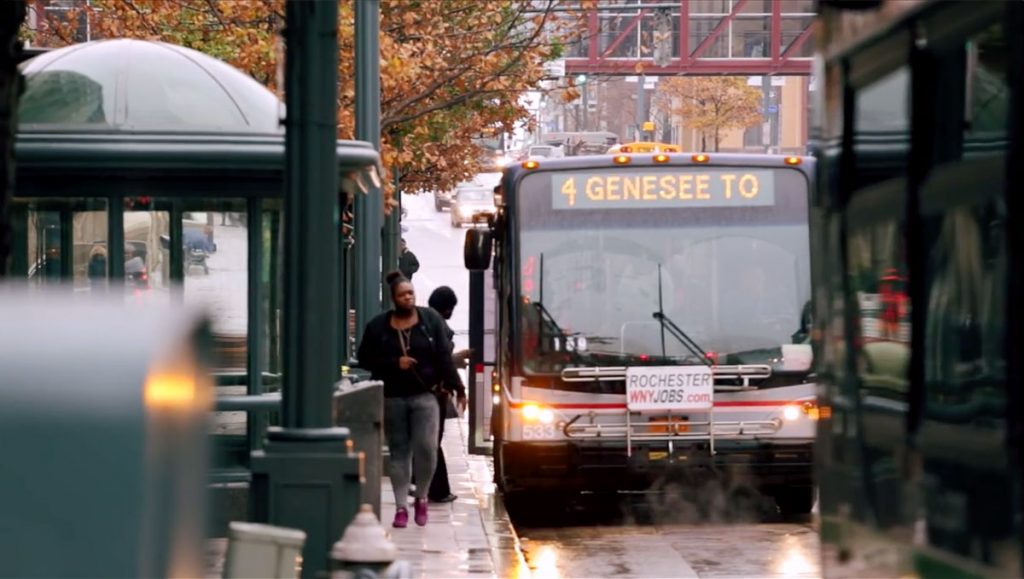Authored by Arian Horbovetz, Reconnect Rochester Board Member
In these suddenly uncertain times, the urbanist virtues of density and public transit are negated by the public responsibility of social distancing. The idea that our cities are cooperative centers of shared innovation, inspiration and collective efficiency has suddenly given way to the real and justifiable fears of physical proximity and viral transmission. Suddenly, many of the qualities that make cities amazing places are the very things that can also promote the spread of the Coronavirus.
Estimates for transit are grim. Transit agencies across the country are likely seeing an estimated 50%- 90% decrease in ridership. And this is after a 20-year increase in transit utilization suddenly took a dive around 2015, largely due to the popularity of ride-hailing companies like Uber and Lyft. This viral gut-punch will likely be another blow to the vital community resource that is public transportation.

Last week, however, the Federal Government passed a $2-trillion COVID-19 economic stabilization plan, including $25-billion in assistance for public transit. The initial draft of this bill did not include any funding for transit, but staunch and persistent outcry from agencies and advocates across the country led to this tremendous victory in the final version. While not alleviating the economic impact completely, this stimulus will likely keep public transit in most cities from running aground.
Why Is This Important?
Experts estimate that transit agencies will lose $26-$38 billion in revenue as a result of the necessary steps of social distancing, remote work and the closing of non-essential businesses. While this is a monumental blow to the already-strained budgets of nearly every transit system in the nation, it would likely be one that many small-to-midsized cities simply could not overcome. Without the aforementioned assistance from the Federal Government, transit agencies across the nation would have to discontinue important routes and services.
An estimated 36% of transit riders are workers in essential industries such as health care. In a time when our hospital capacities are being pushed to their limits and the presence of essential staff is critical, the importance of reliable public transportation cannot be overstated.

What About Long Term?
The seamless functionality of public transit during this period of uncertainty is tremendously important for public health. But when we finally mitigate the spread of this virus and begin the return to societal normalcy, we will need public transit to help facilitate the economic recovery of our communities. Getting people back to work, back to more frequent trips to stores and fun nights out with friends will all be partially dependent on public transit to help sew the fabric of cities like Rochester back together. A high-functioning RTS bus network here in our community will be a critical safety net, softening the horrific economic impact the coronavirus has already inflicted on our city. Transit can help families do what they need to do now, so that when this time passes, those same families are more likely to fully recover and regenerate our local economy.
Speaking Of RTS
RTS was expected to roll out their long-awaited Reimagine RTS system re-design plan on June 29th of this year, with revised routes, increased frequency on popular routes and “mobility zones” in outlying areas. In a statement last week, RTS CEO Bill Carpenter announced that the rollout of this new plan would be delayed indefinitely.

RTS has, however, remained dedicated to providing riders with regular service while adding more frequent and thorough cleanings of buses and facilities while temporarily waiving fares on all routes.
Pace Bike Share
On March 26, Pace Bike Share announced it would be suspending all rental services for the foreseeable future, and further news reports delivered worse news that Pace will be pulling out of the Rochester market altogether. This development removes another piece of active transportation and connectivity in our city for the time being.
Public Transit’s Recovery
Just when cities like Rochester were beginning to have meaningful conversations about the tremendous social and economic benefits of public transportation, the pandemic we now face will likely have a lasting impact on how we view and interact with public spaces. Since the nature of public transit is physically shared mobility, with close seats, handrails and pull-cords, the understandable long-term stigma generated by the pandemic may mean that riders who can afford to choose more individualized transportation will do so, at least in the short term. In the future, public transit agencies may have to feature newer, cleaner buses, trains and facilities to mitigate what is likely to be a lasting psychological aversion to touching and interacting with public surfaces. And while this aversion will lessen with time, how we, the rider, approach the choice to take public transit from the perspective of our personal health, may never be the same.

We Need Public Transportation
The $25 billion emergency public transit infusion from the federal government that will help to lessen the blow during this difficult period was made possible only by staunch advocacy from organizations and individuals who know the importance of transit in our communities. Those of us who understand transit’s inherent ability to promote equity and mobility options for Rochester and beyond must continue to advocate politically, socially and personally for a robust commitment to public transportation.
Finally, in this time, it is important to remember that many of the folks who are on the front lines, keeping us safe, healthy, and well fed, are the people who rely on public transportation for their everyday commute. And when this difficult time passes, public transit will, as it always has, play in an integral role in Rochester’s economic recovery, connecting people to jobs and resources.
Our city will always be stronger and more adaptable when we have an abundance of mobility options. When our diverse community of citizens are empowered with transportation choices, our Rochester will always be more successful, more equitable and more resilient. We will get through this… and when we do, we will need public transit to do what it has always done, and more.


